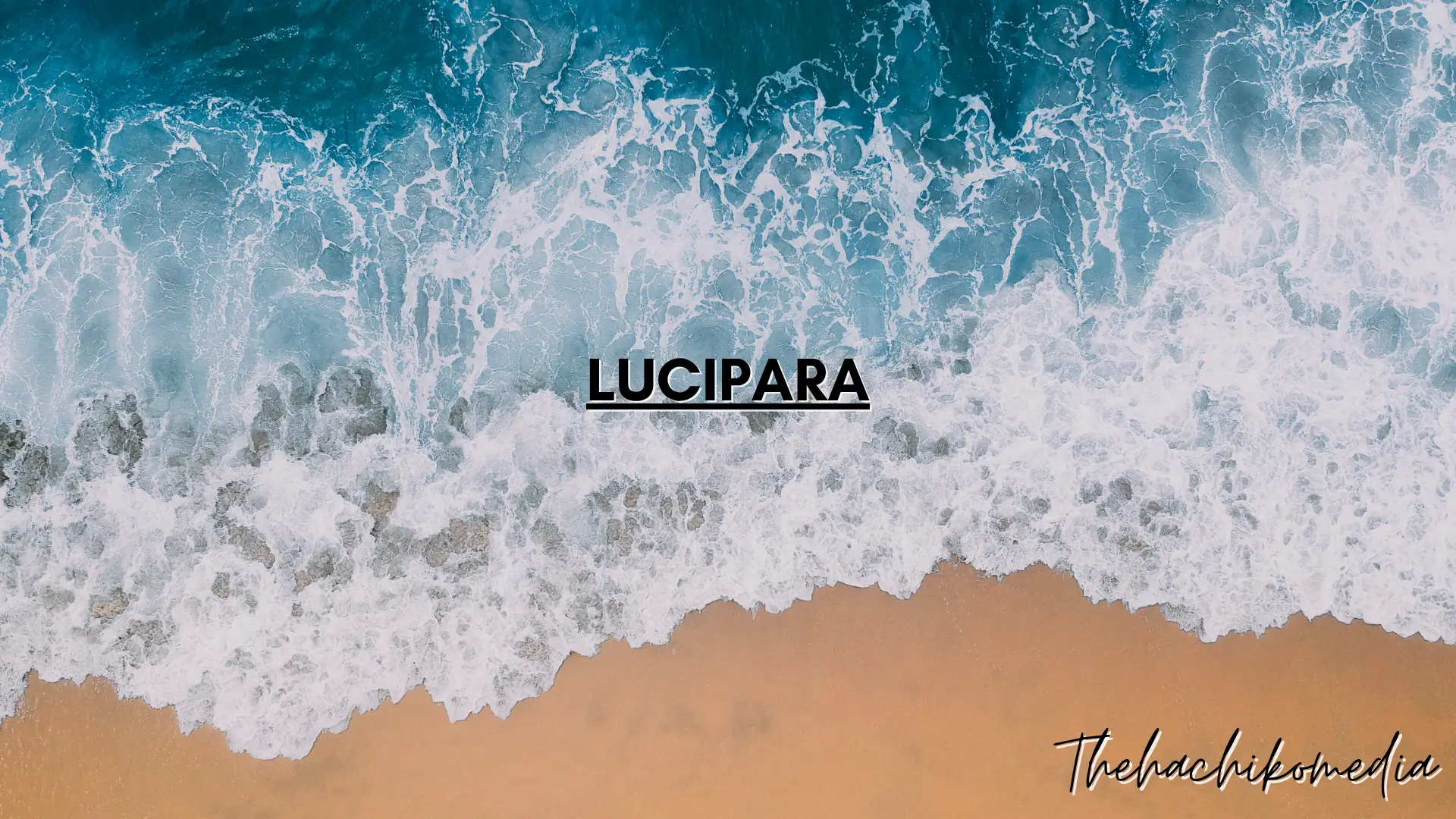Explore the pristine islands of Lucipara and the iconic Euplexia luci para moth on this captivating journey.
Introduction
Nestled in the Banda Sea, the Lucipara Islands remain one of Indonesia’s most pristine paradises. Luci Para offers tourists a once-in-a-lifetime opportunity to take in the pure beauty of nature with its turquoise waters, sparkling coral reefs, and mysterious aura. This article goes into great length on the history, geography, wildlife, tourism prospects, and how to visit the LuciPara Islands.
Where Are the Islands of Lucipara?
The Lucipara Islands, also called Kepulauan luci para, are a small group of islands in Indonesia’s Maluku Province that are situated west of the Banda Islands and east of Ambon. A pristine retreat for people seeking seclusion and a connection to untainted nature, these inaccessible islands are only reachable by lengthy boat trips or private charters.
The Historical Significance of the Lucipara Islands
Though usually overlooked in popular historical accounts, the LuciPara Islands played a small but important role during the Dutch colonial era as navigational landmarks for spice traders sailing the Banda Sea. Despite not being directly involved in the spice trade, Luci Para was located on major shipping channels due to its proximity to the famous Banda Islands, which held the world’s sole nutmeg plantations during the Dutch East India Company’s dominance.
According to early explorers’ chronicles and the remains of old nautical charts, Luci Para is a peculiar continent surrounded by dangerous reefs and abundant marine resources. Due to their lack of significant infrastructure and the fact that they are still largely uninhabited, they are a veritable sanctuary from the modern world.
Geographical Features of the Lucipara Islands
A broad atoll encircling several small, low-lying islands makes up Lucipara. The landscape is defined by the following features:
1. White sand beaches have coconut palms swaying along their shores.
2. Turquoise lagoons are protected by the nearby coral reefs.
3. Coral atolls act as natural barriers to keep out waves from the ocean.
4. Clear, deep-blue waters that are ideal for exploring below
Ecosystems can flourish organically with minimal human intervention due to their remote position. There are no permanent populations on the islands, however local fishermen from nearby islands may set up camp on the beaches during seasonal fishing excursions.
Biodiversity and Diverse Marine Life
The coral reef systems in the Lucipara Islands are among the most biodiverse in the Indonesian archipelago. This area, which is a component of the Coral Triangle, is recognized as the global hotspot for marine biodiversity.
Marine Life in the Region of Lucipara:
Over 300 coral species, including hard and soft varieties
More than 1,000 species of reef fish, such as angelfish, parrotfish, and clownfish
Pelagic creatures including tuna, manta rays, and sharks
Green turtles and hawksbills are examples of endangered species.
Examples of macrolife for scuba divers include nudibranchs, pygmy seahorses, and shrimp.
The surrounding reefs are strong and healthy, exhibiting little symptoms of pollution or bleaching due to the low level of human engagement.
Lucipara as a Snorkeling and Diving Paradise
Lucipara is hailed by diving experts as one of Indonesia’s top unexplored dive spots. With pristine reef systems, massive drop-offs, and unobstructed visibility up to 40 meters, the underwater landscape is stunning.
Top Sites for Luci Para Dive:
1. The Luci para Pinnacle is a submerged seamount that is rich in pelagic life.
2. Eastern Wall Drift: Powerful currents allow for thrilling drift dives along colorful reef cliffs.
3. Luci para Shallows: Excellent for identifying camouflaged animals and taking macro photographs.
4. See phosphorescent plankton and nighttime reef activities by diving into the lagoon at night.
On liveaboard trips, Lucipara is usually highlighted as a highlight of Banda Sea itineraries. These multi-day diving excursions provide access as well as a guided experience in navigating the currents and dive locations.
How to Travel to the LuciPara Islands
Due to their isolated location, Lucipara requires planning before visiting. The most common way to reach the islands is by liveaboard boat, which departs from:
1. Maluku’s main port city, Ambon, is regularly served by flights from Makassar or Jakarta.
2. An ancient island village that is frequently included in diving itineraries is Banda Neira.
Private boat charters are more costly, but they can also be planned and are suitable for research expeditions or high-end holidays.
There is no public transportation, no scheduled boat service, and no tourism infrastructure. Visitors are responsible for bringing all supplies, including food, water, and gasoline.
The Best Time of Year to Visit Lucipara
Since the seas are calm and the visibility is good for diving and snorkeling, the best time to visit Luci Para is during the dry season, which runs from September to November.
Highlights of the Season:
1. March to April: Clear vision, with migratory species in view.
2. Long boat journeys are best during the calm seas of September through November.
3. December–February: Avoid travel as it is rainy and prone to storms.
Due to the monsoons and big waves, the majority of operators cancel trips during the wet season. Always consult local operators and guides for the most up-to-date sea conditions.
Conservation and Sustainability
Because of their pristine condition, the Lucipara Islands are at a pivotal point in their history, balancing the need for strict conservation with the growing interest in the area.
Current Conservation Efforts:
1. Although there is not an official protective status at the moment, conservation groups are working to have the region classified as a marine protected area (MPA).
2. Environmentally conscious dive operators support the “leave no trace” philosophy and enforce strict no-anchor rules.
3. The community continues to work with fishermen from neighboring islands to encourage sustainable methods.
Visitors are urged to recognize the delicate nature of the environment and abstain from any activities that can jeopardize the habitats or marine life.
Details on Travel Safety and Guidance
Visitors must be prepared because the Lucipara Islands are so far away.
Crucial Advice:
1. Bring food, fresh water, medical supplies, and diving gear, among other necessities.
2. Become a member of an experienced liveaboard crew that is familiar with the Banda Sea.
3. Satellite phones or GPS equipment are recommended because cellular reception is nonexistent.
4. It is crucial to be ecologically conscious; do not leave trash behind.
Medical evacuation insurance is essential in case of a diving emergency.
Why Indonesia’s Best-Kept Secret Is Lucipara
Few places on Earth can still offer the LuciPara Islands complete isolation, a pristine environment, and a glimpse of a thriving marine life that is untouched by international tourism. Travelers, marine scientists, and divers have a rare opportunity to experience the Banda Sea’s natural splendors in their most pristine form at Luci Para.
Although access is challenging, those who persevere are rewarded with unique experiences. Luci Para is more than just a destination; it is an exploration of the very heart of Earth’s aquatic legacy.
Conclusion
Lucipara is a unique fusion of scenic beauty and profound metaphorical meaning. The islands serve as a refuge for wildlife, while the Euplexia lucipara moth promotes reflection on transformation and the allure of the unknown. When taken as a whole, they remind us of the thin boundary between discovery and preservation.














Lucipara Islands: Remote Beauty In The Banda Sea - NewsRound
[…] The Hachiko Media. (2025, August 2). Lucipara: A complete handbook.https://thehachikomedia.com/lucipara-a-complete-handbook/ […]